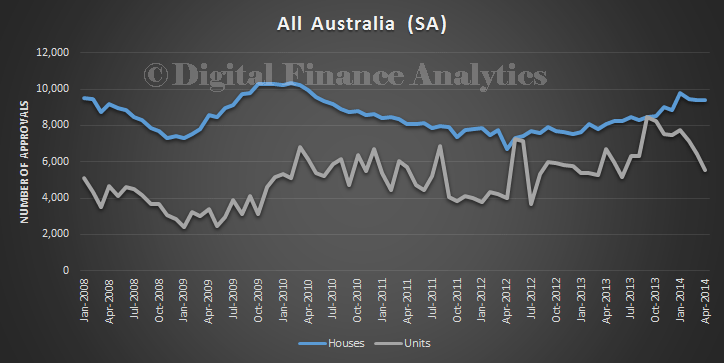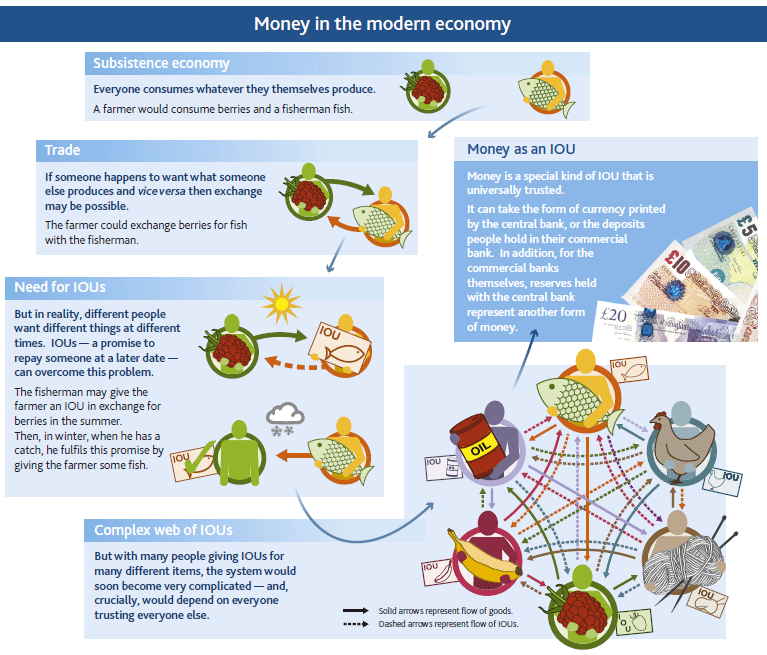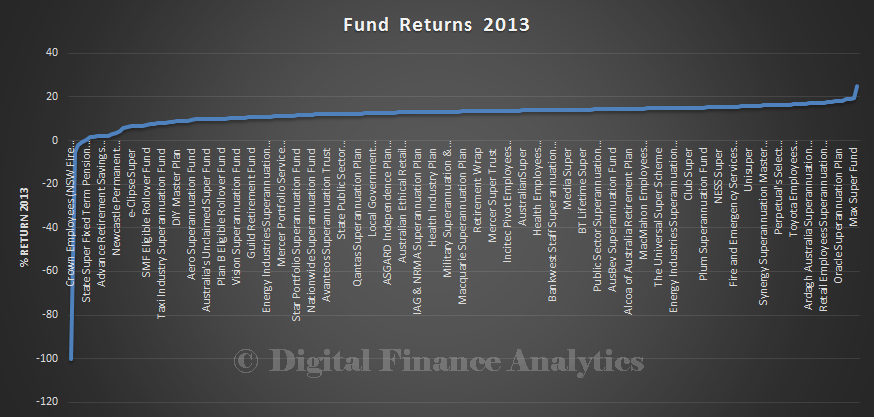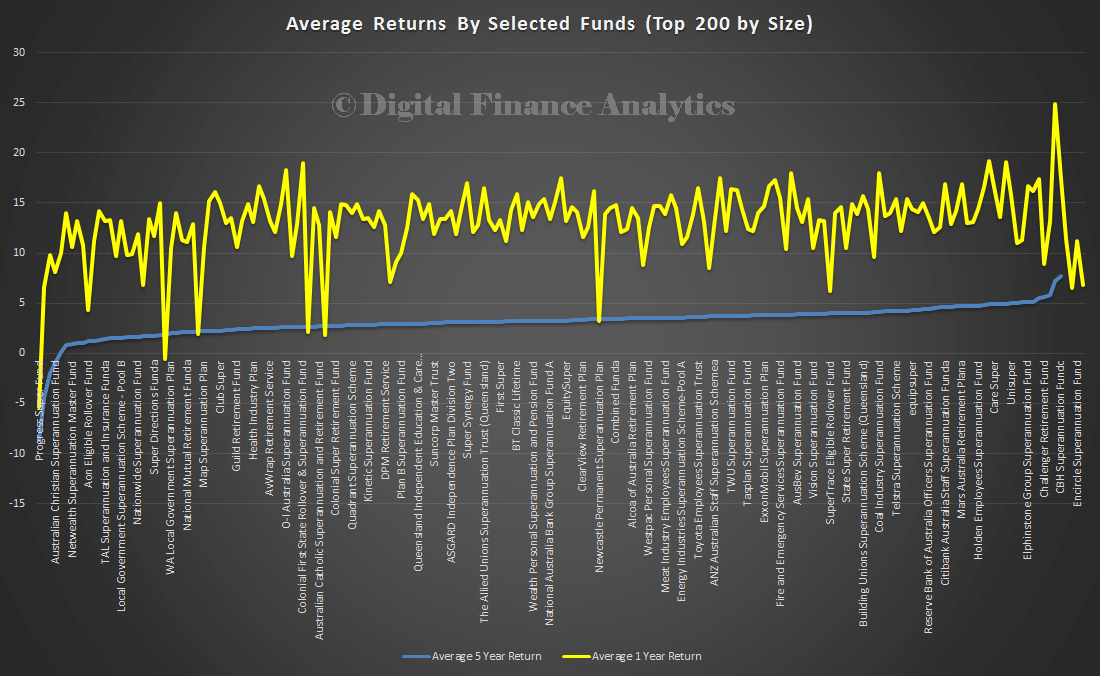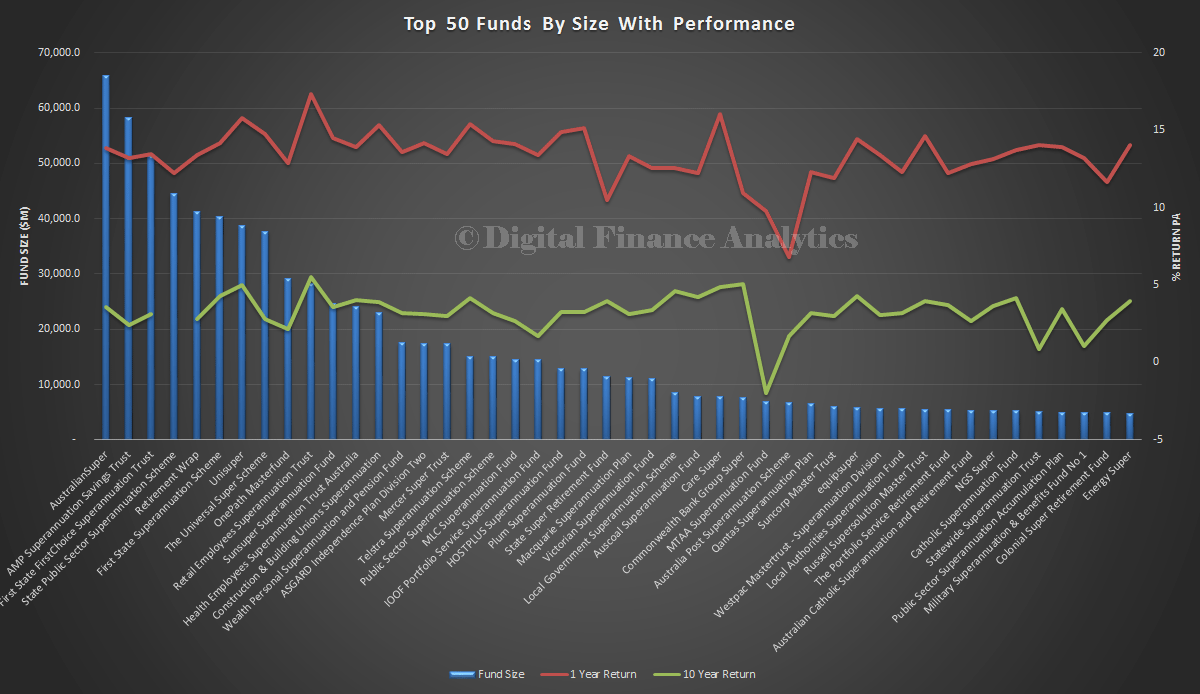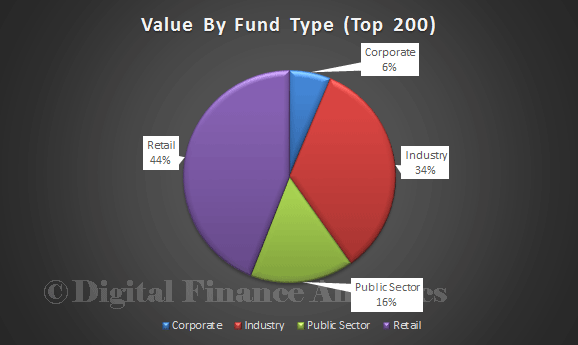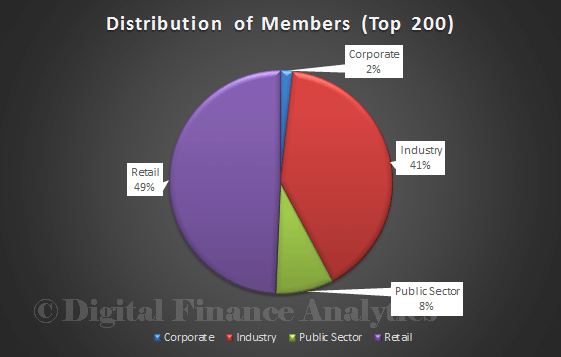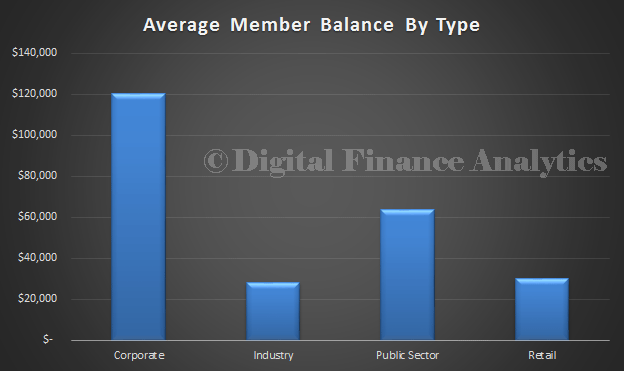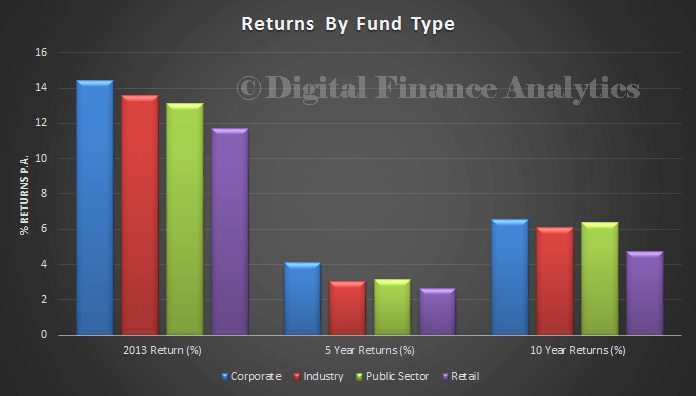The ABS released the building approvals data for April 2014. They report that the trend estimate for total dwellings approved fell 1.6% in April and has fallen for four months. The seasonally adjusted estimate for total dwellings approved fell 5.6% in April and has fallen for three months. Looking at private sector houses, whilst the trend estimate for private sector houses approved rose 0.5% in April and has risen for 16 months, the seasonally adjusted estimate for private sector houses fell 0.3% in April and has fallen for three months. The trend estimate for private sector dwellings excluding houses fell 4.6% in April and has fallen for five months. The seasonally adjusted estimate for private sector dwellings excluding houses fell 14.0% in April and has fallen for three months.
Here is the national seasonally adjusted trend for all units and houses across Australia. Note recent fall in the number of units, and the sustained growth in houses nationally.
The trend estimate of the value of total building approved fell 5.6% in April and has fallen for five months. The value of residential building fell 1.8% and has fallen for four months. The value of non-residential building fell 12.8% and has fallen for five months. The seasonally adjusted estimate of the value of total building approved fell 17.4% in April and has fallen for four months. The value of residential building fell 7.4% and has fallen for two months. The value of non-residential building fell 36.6% and has fallen for four months.
Looking at the state data, we see some interesting variations.
In NSW there was drop last month in unit approvals, having seen run-away growth in the past year. The number of house approvals also fell slightly. But overall, more units and high density housing was approved than houses, reflecting investment demand and affordability issues.
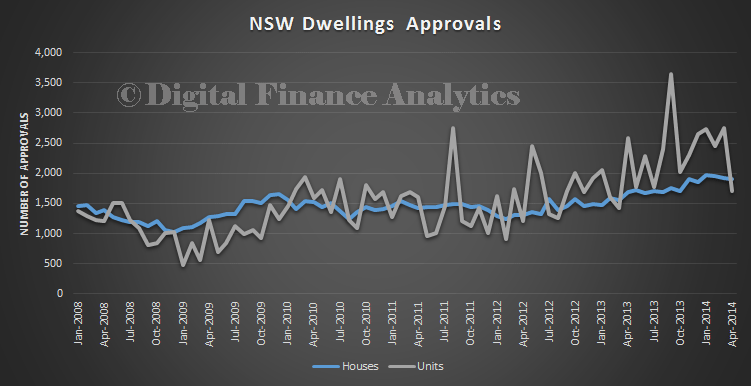 In VIC house approvals is on the rise, and is still outpacing unit approvals.
In VIC house approvals is on the rise, and is still outpacing unit approvals.
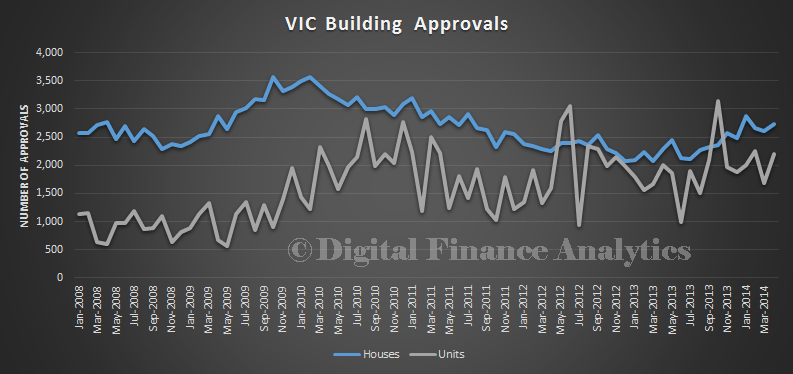 In QLD, unit approvals have fallen away, an house approvals are down slightly.
In QLD, unit approvals have fallen away, an house approvals are down slightly.
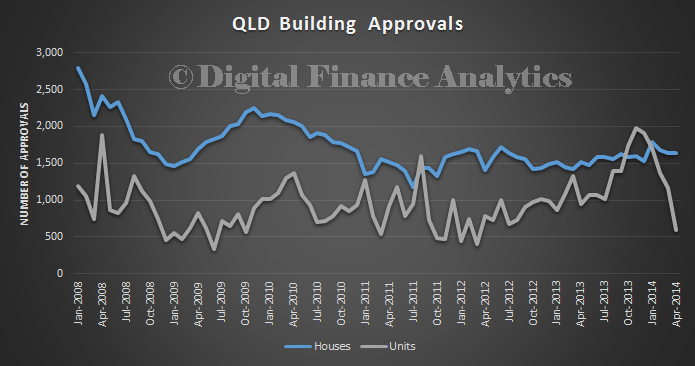 In SA, house approvals are way ahead of unit approvals, though we see a slight fall in house approvals recently, and a slight rise in units.
In SA, house approvals are way ahead of unit approvals, though we see a slight fall in house approvals recently, and a slight rise in units.
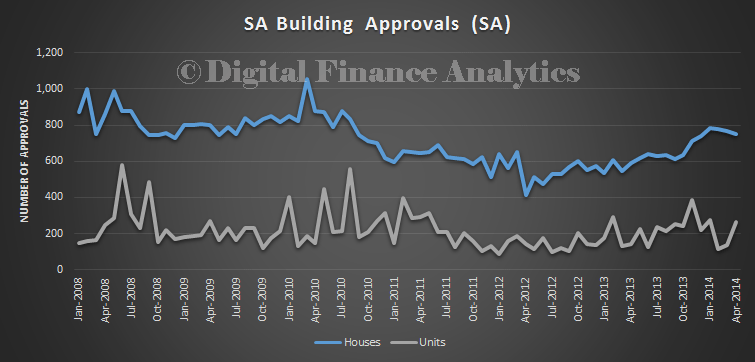 Finally, in WA, we see growth in house approvals in recent months, but a turn down recently. Units are up slightly, but are significantly below housing approvals.
Finally, in WA, we see growth in house approvals in recent months, but a turn down recently. Units are up slightly, but are significantly below housing approvals.
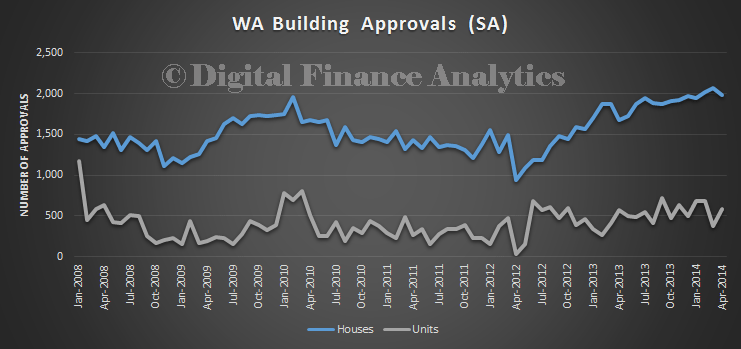 Overall then, with approvals down, we wonder about momentum in the property market. Maybe the demand supply gap is getting bigger. To meet the demand for property, and to help ease prices, we need greater supply. We estimate that over the next three years we will need more than 900,000 new properties to meet demand
Overall then, with approvals down, we wonder about momentum in the property market. Maybe the demand supply gap is getting bigger. To meet the demand for property, and to help ease prices, we need greater supply. We estimate that over the next three years we will need more than 900,000 new properties to meet demand

